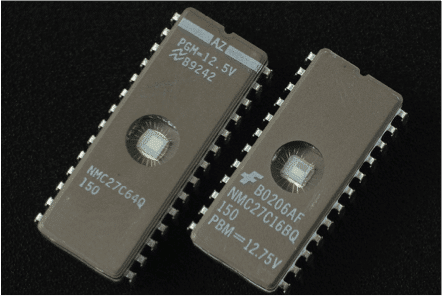Semiconductor chips are found in almost any type of electronic these days, fulfilling a huge area of uses to the designer and consumer alike. Considering how widely used these products are today, one might reasonably assume that anybody can make them and duplicate already created processes in designing their own products. However, working under this mindset can quickly lead to a designer finding herself on the wrong side of the law. 
In late 1984 the Semiconductor Chip Protection Act (“SCPA”, also known as 17 USC §§901-914) came into force, offering protective mechanisms to innovators (“mask work owners” in the Act) of original semiconductor chip products. The Act forms a piece of the United States Copyright Act, although it stands alone as its own chapter and has certain requirements setting it apart from the rest of US copyright law.
The Act covers everything from what “mask work” is and who “owners” are, to what products are afforded protected under the Act, how to register a product with the Copyright Office, limitations on the rights of the owner, and the legal ramifications when someone tries to copy another owner’s work without permission. This post will focus on the first half of the Act, looking at protections offered to owners and limitations that may exist. Part II will discuss the legal ramifications of breaching an owner’s rights.
Section 901 (Chapter 9, Section 1) of the Act provides definitions, explaining what is meant by terms such as a “semiconductor chip product,” “owner,” and “innocent purchaser.”
Section 902 outlines the subject matter of the Act. This section of the Act specifies when the product is able to receive protection: either the date on which it is registered under section 908, or when it is first “commercially exploited anywhere in the world,” whichever of these came first. This section also details who the owner must be for the protection to be available. For example, the owner must be either a US national or someone living in the US, or is connected to a foreign nation with whom the US has a treaty relationship that extends protection for semiconductor chips. The third option is that the owner be a stateless person (no nationality to any country). There are also special powers awarded to the US President under this section, allowing them to extend protection to an individual from a nation where a treaty between the two countries is not yet in place. Finally, this section stipulates that only original works can obtain protection under the Act.
Section 903 provides that the owner of the mask work (semiconductor chip) is the one who holds the protection. The protection can be transferred to or shared with others through the sale of the product or license. Any mask works created by the US government are not granted protection under the Act.
In additional sections the Act goes on to provide that the protection is offered for a period of 10 years. The Act also explains the extent of the rights that ownership carries as well as the limits placed on ownership. For example, reverse engineering, the act of taking something apart to be able to learn about it and make it better, is deemed acceptable under the Act. Innocent purchasers of products with protected semiconductor chips are another limitation placed on ownership under the Act.
Finally, the Act explains how one may go about giving notice to the rest of the world that Federal law protects the semiconductor chip found in the product. This can be done using words, or symbols such as “*M*” or “Ⓜ” (‘M’ in a circle). The name or a well-known abbreviation of the owner of the work should also be located on the product.
For more information about the SCPA, contact Revision Legal’s Copyright attorneys through the form on this page or call 855-473-8474.




